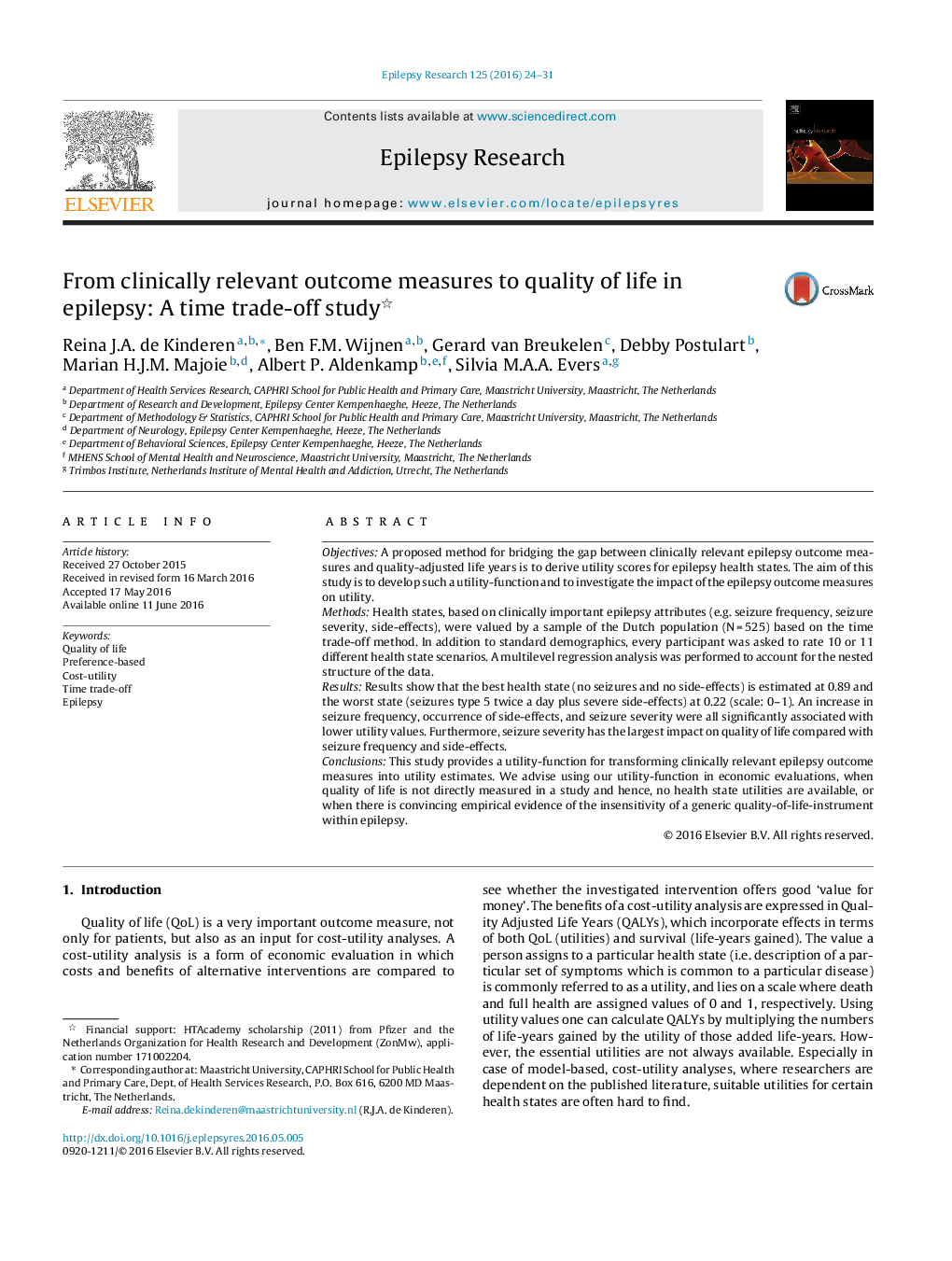| Article ID | Journal | Published Year | Pages | File Type |
|---|---|---|---|---|
| 3051904 | Epilepsy Research | 2016 | 8 Pages |
•Development of population based utilities with the time trade off method.•Clinically relevant epilepsy outcome measures are transformed into utility estimates.•Appropriate utility estimations for economic evaluations based on clinical outcomes.•Seizure severity is the most important factor on utility.
ObjectivesA proposed method for bridging the gap between clinically relevant epilepsy outcome measures and quality-adjusted life years is to derive utility scores for epilepsy health states. The aim of this study is to develop such a utility-function and to investigate the impact of the epilepsy outcome measures on utility.MethodsHealth states, based on clinically important epilepsy attributes (e.g. seizure frequency, seizure severity, side-effects), were valued by a sample of the Dutch population (N = 525) based on the time trade-off method. In addition to standard demographics, every participant was asked to rate 10 or 11 different health state scenarios. A multilevel regression analysis was performed to account for the nested structure of the data.ResultsResults show that the best health state (no seizures and no side-effects) is estimated at 0.89 and the worst state (seizures type 5 twice a day plus severe side-effects) at 0.22 (scale: 0–1). An increase in seizure frequency, occurrence of side-effects, and seizure severity were all significantly associated with lower utility values. Furthermore, seizure severity has the largest impact on quality of life compared with seizure frequency and side-effects.ConclusionsThis study provides a utility-function for transforming clinically relevant epilepsy outcome measures into utility estimates. We advise using our utility-function in economic evaluations, when quality of life is not directly measured in a study and hence, no health state utilities are available, or when there is convincing empirical evidence of the insensitivity of a generic quality-of-life-instrument within epilepsy.
